
OBJECTIVE OF JEKYLL V HYDE: Hyde immediately wins if the Identity token ever lands in their home space. If the token has not reached Hyde’s home space by the end of the third round, Jekyll wins.
NUMBER OF PLAYERS: 2 players
CONTENTS: 25 cards, 1 Identify Token, 1 game board, 3 suit tokens, 1 instruction booklet
TYPE OF GAME: Trick Taking Card Game
AUDIENCE: Ages 14+
INTRODUCTION OF JEKYLL VS HYDE
Jekyll vs Hyde is an asymmetric trick taking card game for two players. Each player has a different objective. The person who plays as Dr. Jekyll is simply trying to keep the identity token from moving all the way to Mr. Hyde’s home space. Mr. Hyde, is trying to dominate the game and move the token to their home space as quickly as possible.
There are potion cards that players can use to activate special powers. They might be able to change the suit ranking, or they could force an opponent to swap two cards. Use the potion cards wisely to gain the upper hand.
CONTENTS
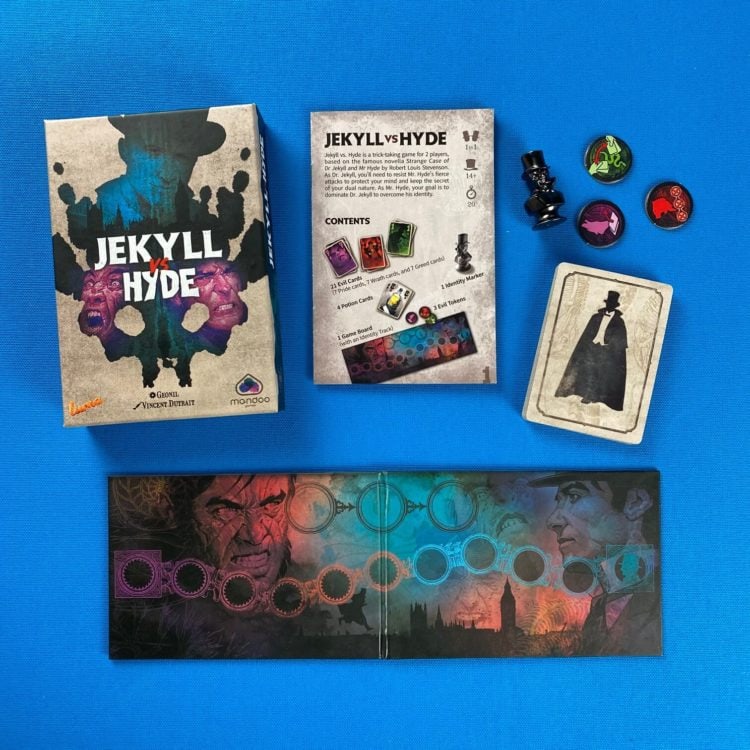
The game uses a three suited 25 card deck. The suits are Pride, Wrath, and Greed (purple, red, and green respectively). Within the deck are four potion cards, and each potion has a different rank. Potions will allow players to activate a special power to affect the game. There are three evil Tokens that represent each suit. They are positioned on the board to show the ranking of the suits. The tokens can be switched during the game.
At the center of gameplay is the board and Identity token. After each round, the token will be moved along the identity track according to who wins.
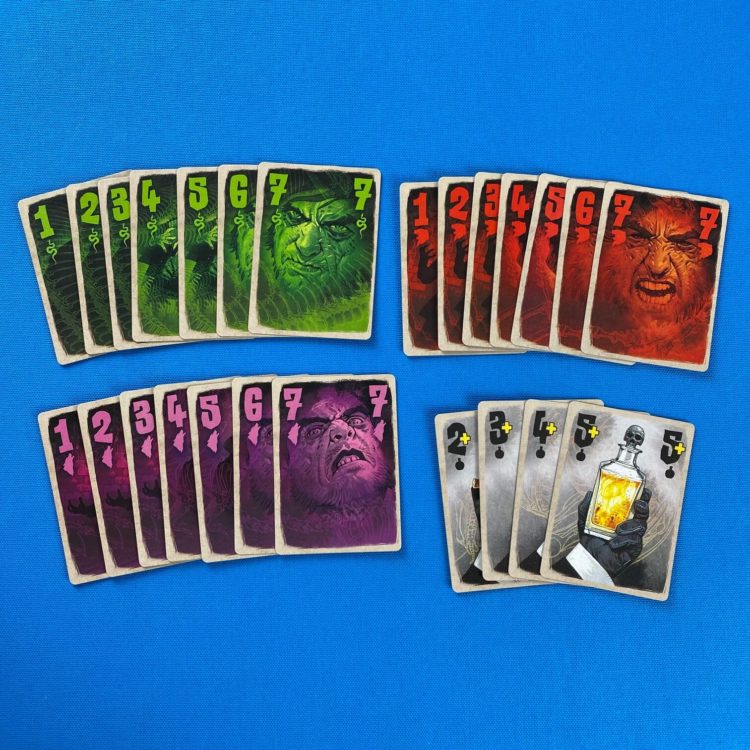
SETUP
Each player picks whether they want to be Dr. Jekyll or Mr. Hyde. Place the board between the two players so that each is sitting at the appropriate end. The identity marker begins on Dr. Jekyll’s home space.
Place the three evil tokens near the board. Shuffle all of the cards (including the potions) together. Mr. Hyde deals.
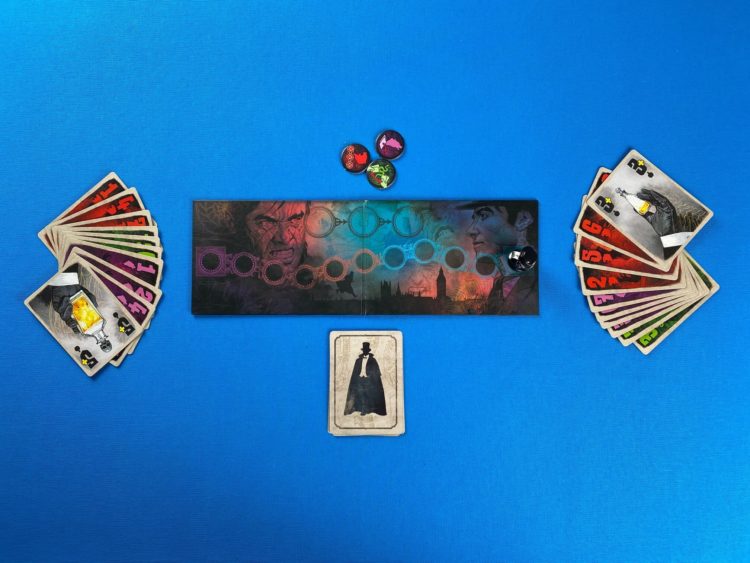
THE PLAY
Dr. Jekyll gets to start the game. Each round has three phases: preparation, trick taking, and progression of evil.
PREPARATION
Deal 10 cards to each player. The 5 remaining cards are set aside.
Each player chooses one card from their hand to exchange with their opponent. If a player has 2 or more potion cards in their hand, they must include at least one potion card in the exchange. Place the cards face down and exchange them.
For round two, each player will exchange two cards. Three cards are exchanged for round three. The cards are all exchanged simultaneously. Again, if a player has 2 or more potions in their hand, they must include at least one in the exchange.
TRICK TAKING
The placement of the identity marker determines who leads the round. If the marker is in Dr. Jekyll’s area of the board (blue circles), that player begins the first. The same goes if the marker is in Mr. Hyde’s area (purple circles). That player would begin the first trick.
Whoever begins the trick can play any card from their hand. If a card from one of the three suits is played, the opposite player must match it if they can, or they may play a potion card. If the player cannot match the color that is led, they may play any card.
If the player leads the trick with a potion, they say what color they want their opponent to play. If the player has that color, they must play it even if they have a potion card as well.
The highest card in the suit that was led takes the trick. If more than one color is played to the trick, the highest ranking color wins. If a potion is played, the highest number wins after the potion’s effect is resolved.
The trick winner collects the cards and leads the next trick.
DETERMINE COLOR RANK
At the beginning of the game, the different colored suits are not ranked. Suit ranking is determined as the beginning cards are played.
The first color to be played becomes the lowest ranked suit. For example, if the player that leads the first trick plays a pride suited card (purple), that becomes the lowest ranked suit. Place that color suit’s token on the far left circle of the suit ranking line. As soon as a second color suit is played, it becomes the middle ranked suit, and the remaining suit becomes the highest.
For example, Tom leads the first trick with the purple 6. Purple becomes the lowest ranking suit. Melinda does not have any purple cards, so she plays a red 1. Red immediately becomes the middle ranked suit. Green also immediately becomes the highest ranked suit. Melinda wins the trick with her red card.
POTION CARDS
The potion cards are ranked 2+ through 5+. They always beat a color card of the same rank.
A player is able to lead a trick or follow with a potion card. The potion card’s effect depends on the other card in the trick. If the other card is purple, the trick-winner gets to take one trick from their opponent. If their opponent doesn’t have any tricks, nothing special happens. If the other card is green, both players pick two cards from their hand to exchange with each other. If a player only has one card left, they exchange one card. If the other card in the trick is red, all of the suit tokens are removed from the suit line of circles. Suit ranking will be reset by the cards played from this point.
When a potion card is played, the highest number wins the trick. Suit order doesn’t matter. For example, Tom plays a green 5 to the trick. Melinda plays a 2+ potion. Tom wins, and the players exchange two cards simultaneously. If Tom had played a green 2, Melinda would have won because potion cards with the + symbol beat any color card of the same rank.
If both cards in the trick are potions, the highest number wins. No special action is activated.
Play continues until all ten tricks are completed. At that point, it is time to move the identity marker along the track.
Once the marker is moved, deal out another round. The player with the identity marker on their side of the board leads the first trick.
MOVING THE IDENTITY MARKER
At the end of the round, compare how many tricks each player won. Subtract the lower number from the higher number. That is how many spaces the identity marker moves toward Mr. Hyde. It does not matter who wins more tricks. The identity marker will always move toward Mr. Hyde. The only time it does not move is if each player wins the exact same number of tricks.
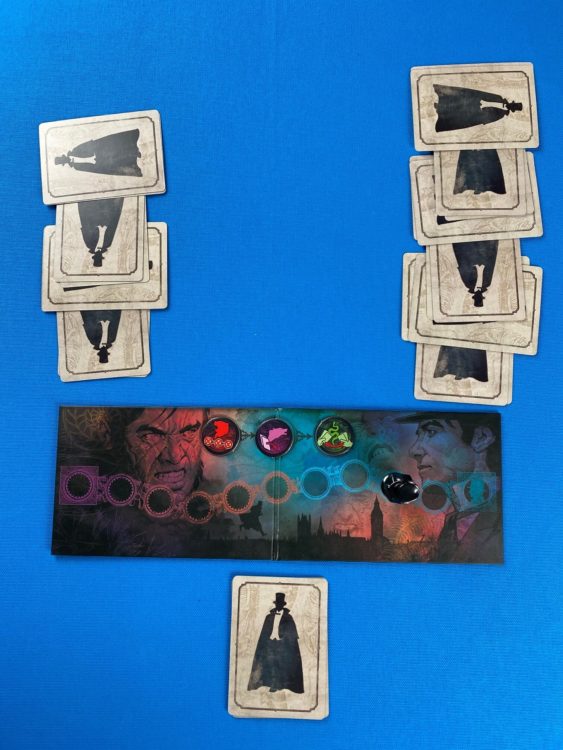
In the example above, Dr. Jekyll has won six tricks, and Mr. Hyde has won four. The identify marker is moved two spaces towards Mr. Hyde.
WINNING
If the identity token ever reaches Mr. Hyde’s home space, the game ends and Mr. Hyde wins. Otherwise, the game ends after the third round. If the identity marker has not reached Mr. Hyde’s home space, Dr. Jekyll wins.
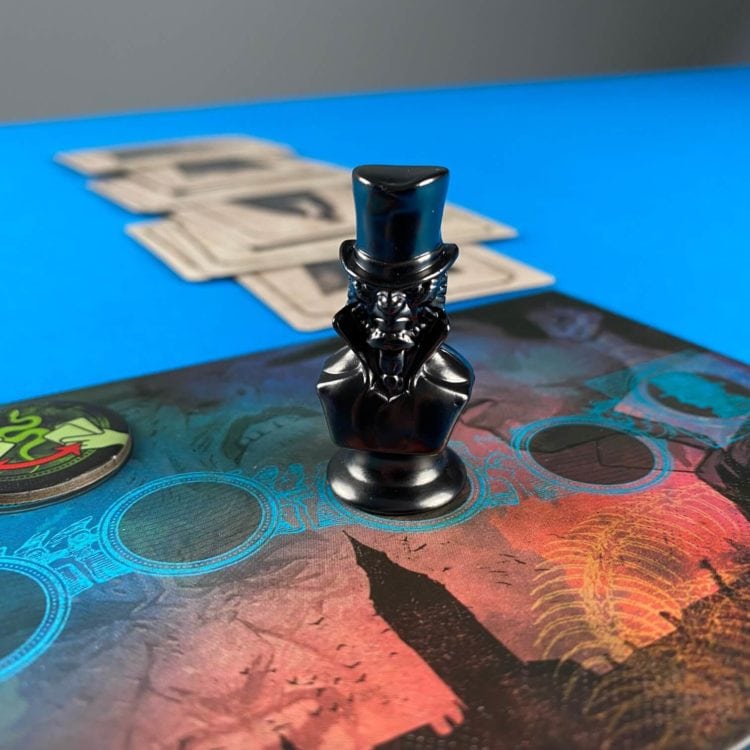
- TRIPLE SNAKES - February 15, 2021